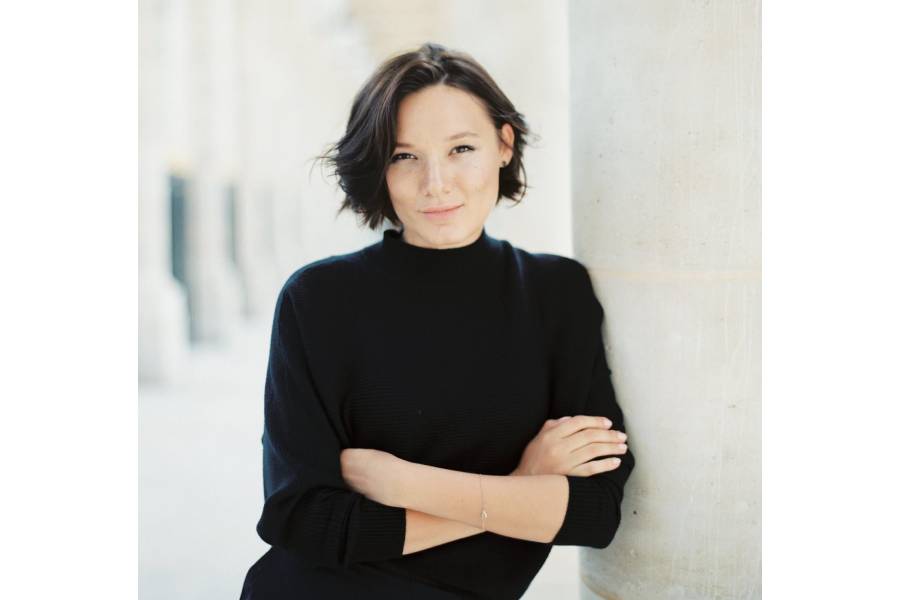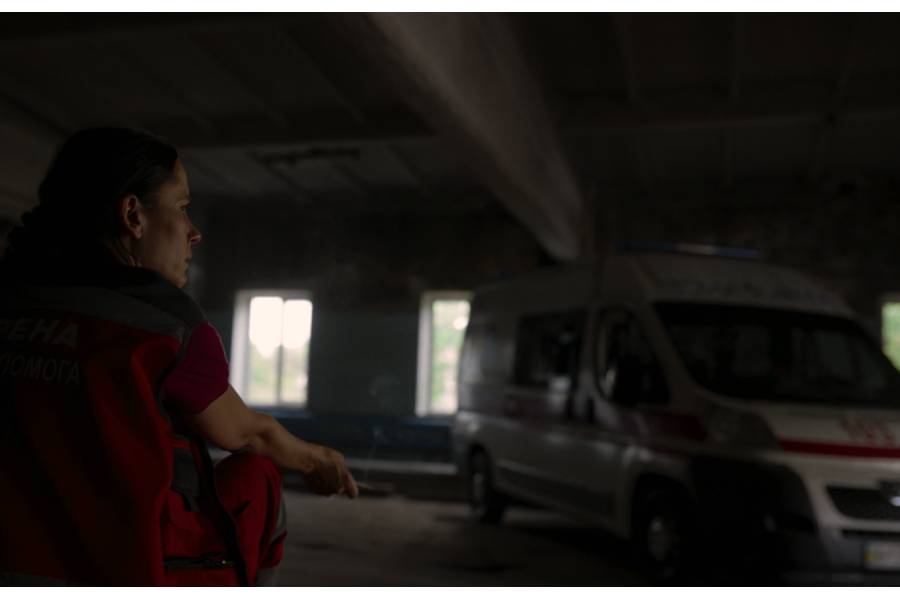 FNE: What was the inspiration for this story?
FNE: What was the inspiration for this story?
Christina Tynkevych: How is Katia? was born out of my feature short Solatium, which also dealt with the themes of grief and vengeance, and had a similar plot conflict at its core (a paramedic arrives on a call and has to make a decision on whether she saves the person who killed her child or lets him die). However, being limited by the constraints of a short film, I could not explore the potential of the story in its fullest. I was compelled to dig deeper and examine my protagonist’s moral transformation in detail, with an appropriate pace. It took me three years to develop the initial premise into a feature. Many characters and story elements have changed drastically during the development process, but the one thing that stayed was the actress playing the protagonist of the film, Anastasia Karpenko.
FNE: What is the situation for film production in the Ukraine now?
Christina Tynkevych: Overall, Ukraine has had a giant growth in terms of both auteur and mainstream cinema in the last 10 years. Our films have travelled extensively across festivals worldwide and we have a few successful examples of local commercial films. In these years, we have opened to coproductions, joined Eurimage and have become a much more active player within the European industry. However, our industry cannot stay untouched by the economical (Covid) and political turbulence that we exist in.  We’re dependent on state funding as our primary source of financing (Ukrainian State film Agency, Ukrainian Institute for international promotion). Private investment is rare even with mainstream productions, since Ukrainian box-office is still relatively small. The situation is balanced, though, by a new generation of filmmakers, who are eager to push through the difficulties and persevere despite all odds. And this new powerful energy is here to stay.
We’re dependent on state funding as our primary source of financing (Ukrainian State film Agency, Ukrainian Institute for international promotion). Private investment is rare even with mainstream productions, since Ukrainian box-office is still relatively small. The situation is balanced, though, by a new generation of filmmakers, who are eager to push through the difficulties and persevere despite all odds. And this new powerful energy is here to stay.
FNE: What challenges did you face in making this film?
Christina Tynkevych: The biggest one was Covid, undoubtedly. We were supposed to enter principal photography in mid-April 2020, but that’s exactly when the first lockdown hit. Now, we’re more or less used to this new post-covid world and we know how to navigate it, but last year it was a complete chaos. We were one of the first film productions in Ukraine to continue with the shoot in June 2020, but still it was tough, as there have been numerous limitations and a constant threat of a sudden lockdown.
FNE: Tell us about your production aesthetic, in choosing to employ a single-take approach.
Christina Tynkevych: As a director, I have always been mesmerized by long intricate one-shot scenes. Such an approach, if done well, offers an unbeaten level of realism and literally submerges the audience into the world of the film. The difficulty, though, is that acting, pacing and camera work need to be impeccable on set, as there is no possibility to edit it afterwards. So, in a way, shooting single-take is editing “live”; you choose your focus in the scene (object, angle, framing) right on set and you have no alternative coverage in the editing room. Such an  approach involves shooting multiple takes (15-20 on average), simply because too many elements have to work out simultaneously. You might get a perfect take camera-wise, but the performances are weak or the other way round. And since we allowed a certain level of improv on set (in most locations we lit the scene 360 degrees allowing the actors to move freely), it was extremely important for the cinematographer Vladislav Voronin to be in sync with the performances and “dance” along with the actors. Shooting single takes also taps into my overall style of directing, which is perfecting the scene with each take, adjusting and building up until reaching the desired result, as opposed to creating alternative coverage and performances to have more options in post.
approach involves shooting multiple takes (15-20 on average), simply because too many elements have to work out simultaneously. You might get a perfect take camera-wise, but the performances are weak or the other way round. And since we allowed a certain level of improv on set (in most locations we lit the scene 360 degrees allowing the actors to move freely), it was extremely important for the cinematographer Vladislav Voronin to be in sync with the performances and “dance” along with the actors. Shooting single takes also taps into my overall style of directing, which is perfecting the scene with each take, adjusting and building up until reaching the desired result, as opposed to creating alternative coverage and performances to have more options in post.
FNE: Your previous films were documentaries and shorts. How did these prepare you for your feature film debut?
Christina Tynkevych: In my case, the documentary taught me a great deal about understanding structure. Documentary is a genre, in which the story is constructed, for the most part, in post-production. You come to the editing room with tons of footage that you are trying to make sense of. Even the most pre-planned and developed documentary ends up with a great amount of unexpected improvised material. And since in documentaries there is no concrete script to work from (the doc script is more of a blueprint, rather than a script), the documentary editing process becomes a puzzle that one is trying to solve. It’s a rather playful process, in which the director and editor are pushed to a much bigger amount of experimentation in comparison to a feature film. And this experimentation lets you try out a dozen of structures and methods, thus giving a much better understanding of the craft of storytelling.
Sponsored by Evos film



















